Both Elgato and Razer want to close the gap to even more expensive system cameras with expensive webcams. In the test, this works to a certain extent: Both products deliver a higher image quality than conventional models on a smartphone level and, moreover, greater configurability, but have individual weaknesses.
Table of contents
- 1 Elgato Facecam and Razer Kiyo Pro vs. Smartphone and DSLM
- Housing in round and square with different mounts
- Equipment and alternative software
- 2 Image quality in comparison
- Sensors and lenses in comparison
- Test recordings in two lighting situations
- 3 Conclusion
- Both models have their own strengths and weaknesses
- Not quite halfway between webcam and system camera
With the Facecam, the manufacturer Elgato, known for streaming accessories and bought by Corsair three years ago, recently presented a webcam in the upper price segment. Until now, the company only had capture cards and various connection cards for external system cameras in its range, now the portfolio is rounded off at the bottom. Dedicated cameras are often expensive and time-consuming to set up, so that classic webcams are still the most common option for beginning streamers and private users to record their own face. Smartphones can also be easily converted into a webcam using the appropriate app, but the qualitative difference to DSLR or DSLM cameras is usually considerable, especially in poor lighting conditions.
Recently, some manufacturers have tried to close this gap with comparatively expensive high-end webcams, including Razer with the Kiyo Pro, which has similar specifications – and ambitions – as the Facecam. This test aims to find out exactly where the two webcams are located between the cheaper alternative in the form of the Logitech C270 and the more expensive system camera in the form of the Sony Alpha 7 III. A comparison with the image quality of an iPhone 12 (test) should also find out whether a dedicated webcam makes sense at all in view of the steadily improving smartphone cameras.
(main camera) Sony Alpha 7 III & amp;
Tamron 28–75 F/2.8 video resolution Full-HD
( 1920 × 1080) HD
(1280 × 720) UHD
(3840 × 2160) Frame rate 60 FPS 30 FPS 60 FPS FHD: 120 FPS
UHD: 30 FPS Microphone No Yes Price (RRP) € 200 210 € 35 € 800 € 3.100 €
The Elgato Facecam costs around 200 euros according to the recommended retail price, Razer's competing Kiyo Pro costs 10 euros more. In the free trade, the Facecam currently comes to around 190 euros, while the Kiyo Pro, on the other hand, is available from just under 150 euros. The aforementioned budget webcam in the form of the Logitech C270 costs around 35 euros, while the iPhone 12, which represents a high-end smartphone, costs around 900 euros according to the RRP. A significantly higher value, but it has to be taken into account that any user interested in video streaming probably already has a smartphone – in the best case, there are hardly any additional costs.
Finally, the aforementioned system camera is completely out of line, and together with the lens used, it has a combined RRP of over 3,000 euros. In addition, there would be the cost of a tripod and ideally a capture card. Alternatively, Sony offers an app with which the Alpha 7 III can be used quite easily as a webcam. System cameras, which are completely adequate for these purposes, can now be purchased for well under 1,000 euros, including their lenses.
Housing in round and square with different mounts
Both Elgato's Facecam and Razer's Kiyo Pro are – compared to conventional webcams – quite large and, at least in the case of the Razer product, also very heavy: the Kiyo Pro and its holder weighs around 259 g. The facecam, on the other hand, only weighs around 136 g, also with bracket and front lens cover. At least the housing of the cameras is mainly made of plastic in both cases – the additional mass of the Kiyo Pro is primarily based on weights in the lower part of the already more expansive holding mechanism. That is exactly what makes Razer's webcam much more stable on a screen.
On the one hand, the camera is better protected against vibrations or accidental impacts, on the other hand, it is also easier to remove the cover: While the facecam usually requires two hands to remove or replace the small cover without moving the webcam, this is the case with the Kiyo Pro basically possible with one hand – at least if the cap is not pushed too far.
-
 Razer Kiyo Pro & amp; Elgato Facecam
Razer Kiyo Pro & amp; Elgato Facecam
Image 1 of 13
 Razer Kiyo Pro & amp; Elgato Facecam
Razer Kiyo Pro & amp; Elgato Facecam  Razer Kiyo Pro & amp; Elgato Facecam
Razer Kiyo Pro & amp; Elgato Facecam 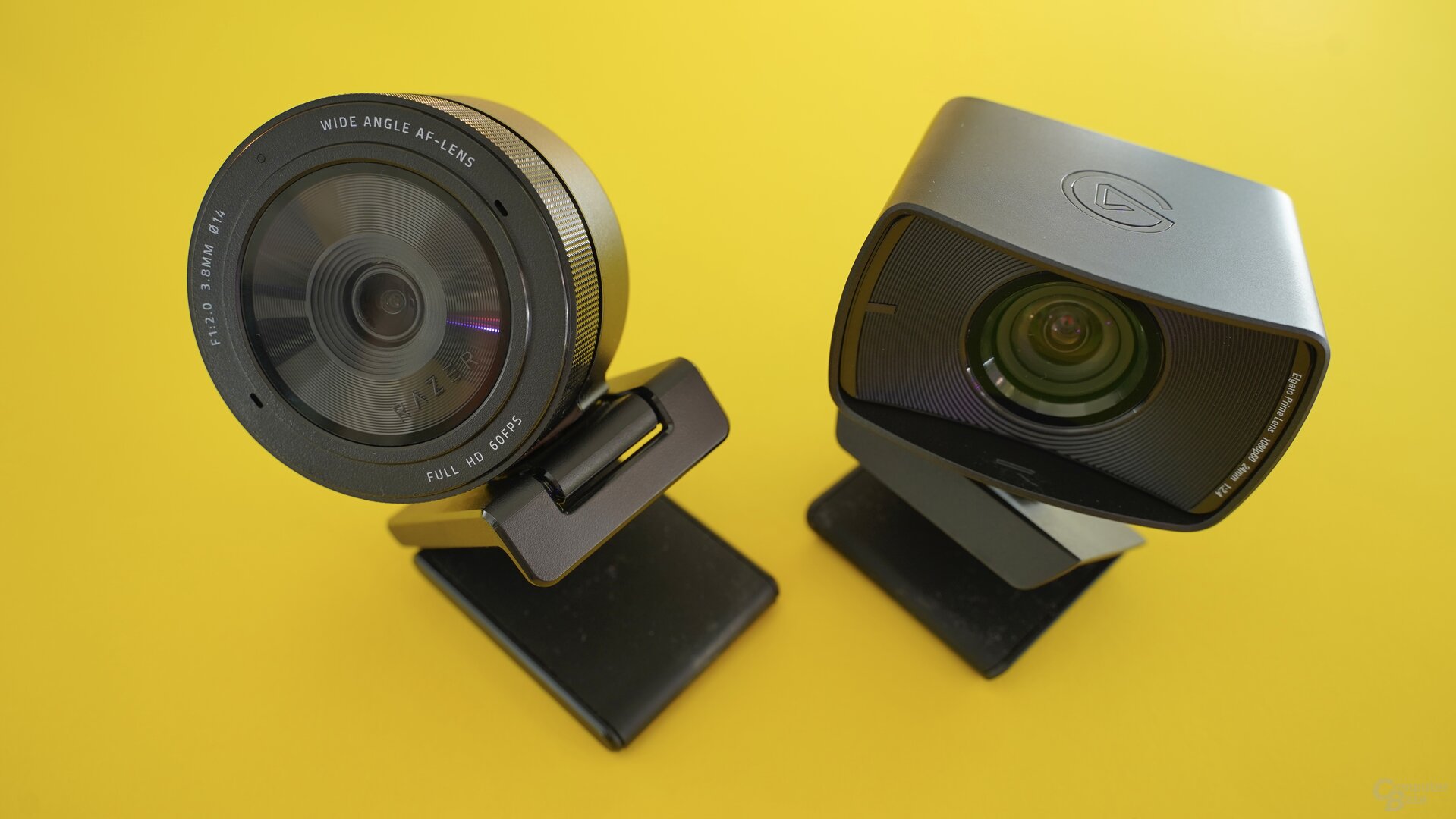 Razer Kiyo Pro & amp; Elgato Facecam
Razer Kiyo Pro & amp; Elgato Facecam  Razer Kiyo Pro & amp; Elgato Facecam
Razer Kiyo Pro & amp; Elgato Facecam  Elgato Facecam
Elgato Facecam 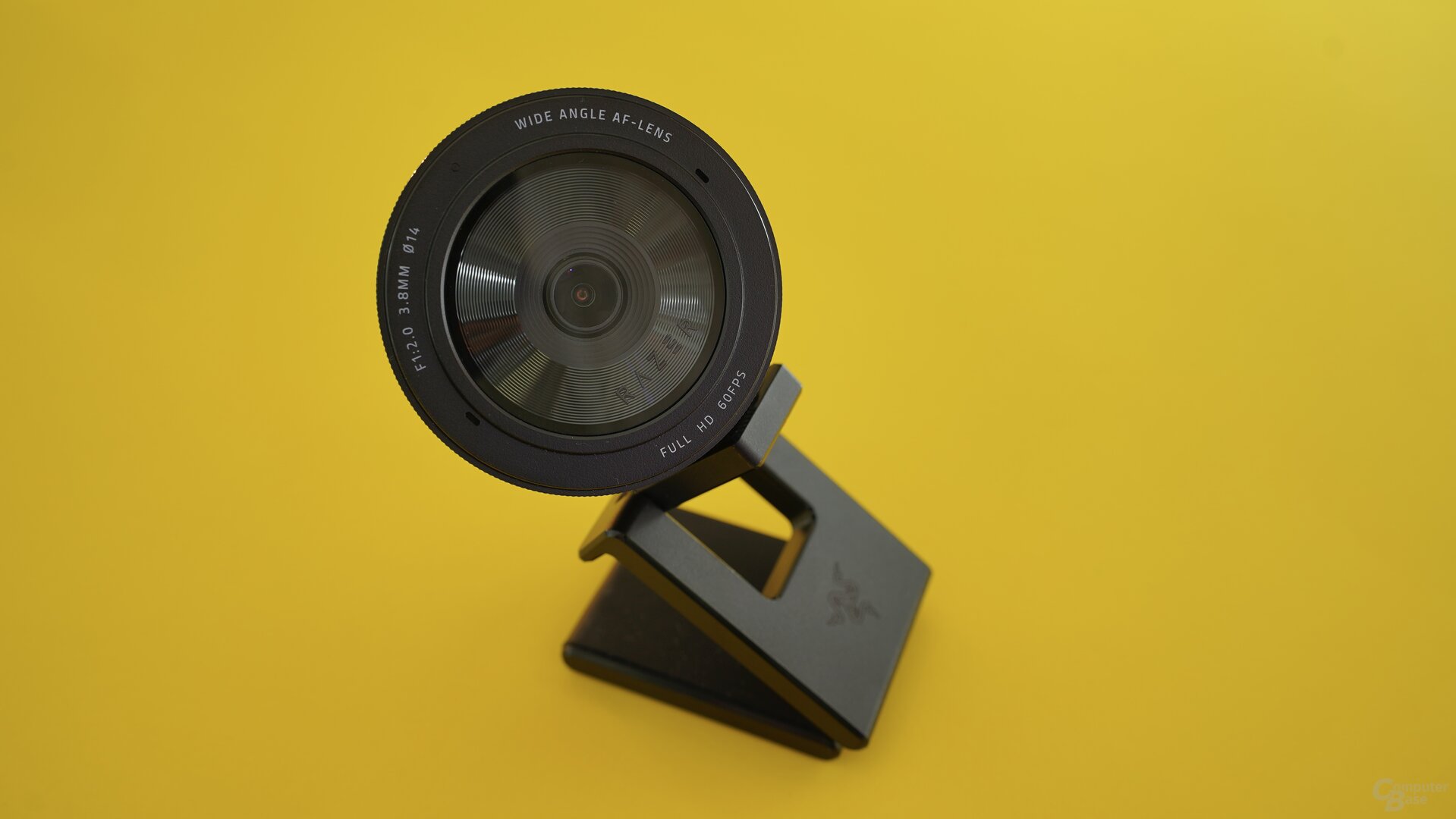 Razer Kiyo Pro
Razer Kiyo Pro  Razer Kiyo Pro
Razer Kiyo Pro 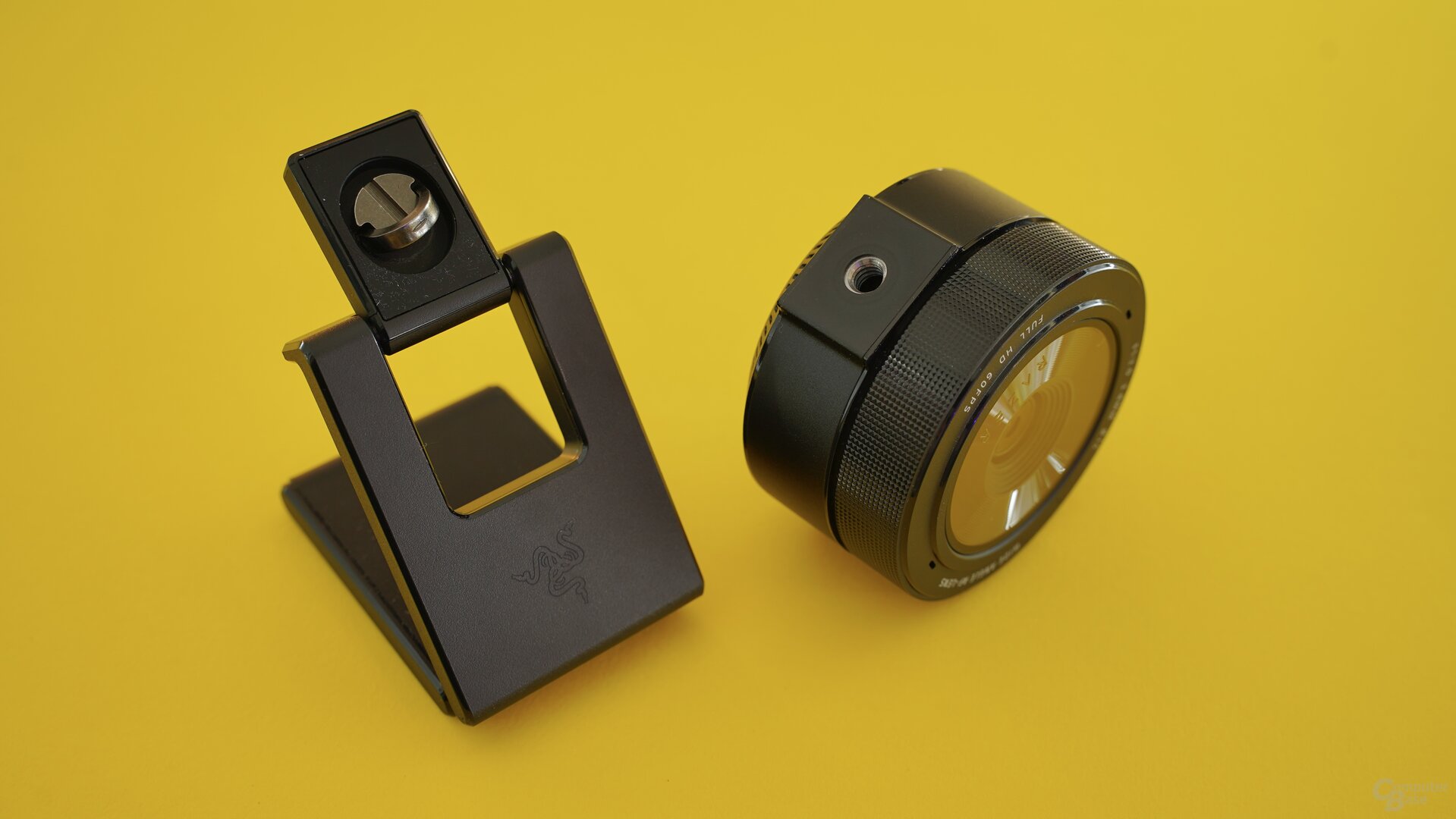 Razer Kiyo Pro
Razer Kiyo Pro  Razer Kiyo Pro =
Razer Kiyo Pro = 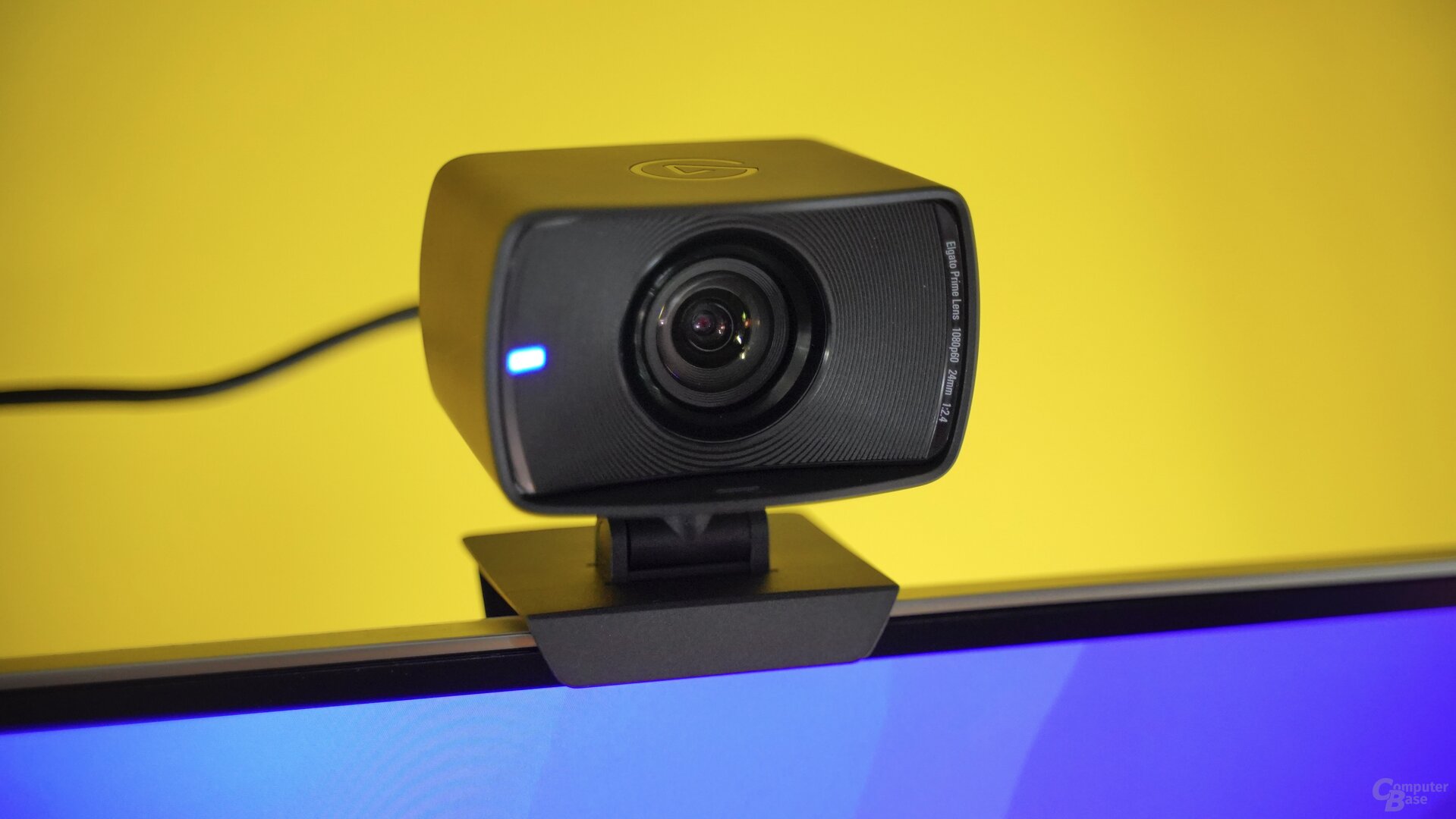 Elgato Facecam
Elgato Facecam Deliberately moving the cameras to adjust the angle of view is difficult with both webcams if the bracket is not to be loosened. Two hands are always an advantage here, although there are differences. Both camera modules can be tilted forwards or backwards. The hinge of the Kiyo is so stiff, however, that the forward inclination always pulls the bracket upwards, unless a second hand offers resistance. The hinge of the facecam is smoother, but still sufficiently rigid not to let the webcam tilt over time. Both camera modules can also be turned to the right and left, for which – at least with the Kiyo Pro – it is also advisable to use both hands.
Two USB-C cables with differences
The cables supplied with the two webcams are again different. Although both cameras have a USB-C socket, Elgato equips the Facecam with a 2 m long, rubberized cable, while the Kiyo Pro has a nylon-wrapped version that is only 1.5 m long. Even the cable of the facecam is anything but flexible, but that of the Razer webcam is really stiff and stubborn – sometimes so much that the Kiyo Pro is rotated through the cable if the screw of the bracket is not tightened. The shorter length makes this situation even more problematic: If the cable is under tension because it barely reaches from webcam to PC, fine gradation of the webcam rotation is hardly possible.
Both webcams can be screwed onto tripods
Alternatively, both Facecam and Kiyo Pro can be attached to an ordinary tripod using a 1/4 inch thread. In the case of the Elgato webcam, users have to remove the rotatable and tiltable bracket so that the camera module sits rigidly on the tripod. If it again has joints, this is not a problem. But cheaper or smaller tripods in particular often come without the corresponding mobility. The Kiyo Pro is better equipped for this case: it can either be screwed on without its bracket or with its bracket. In the second case, all those alignment options are then available that are also available when mounting on a screen.
-
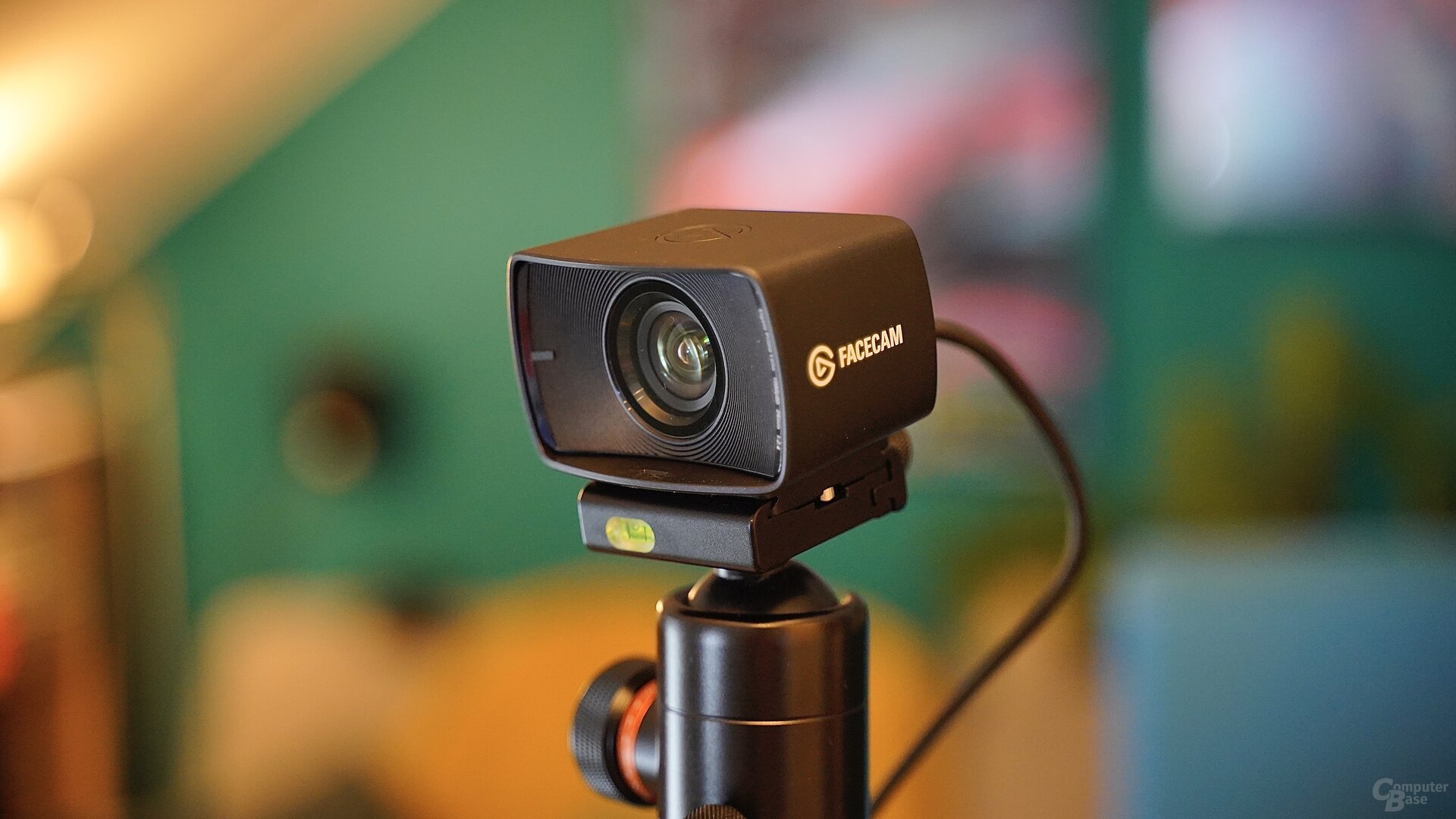 Elgato Facecam
Elgato Facecam
Image 1 of 5
 Elgato Facecam
Elgato Facecam  .jpgRazer Kiyo Pro
.jpgRazer Kiyo Pro 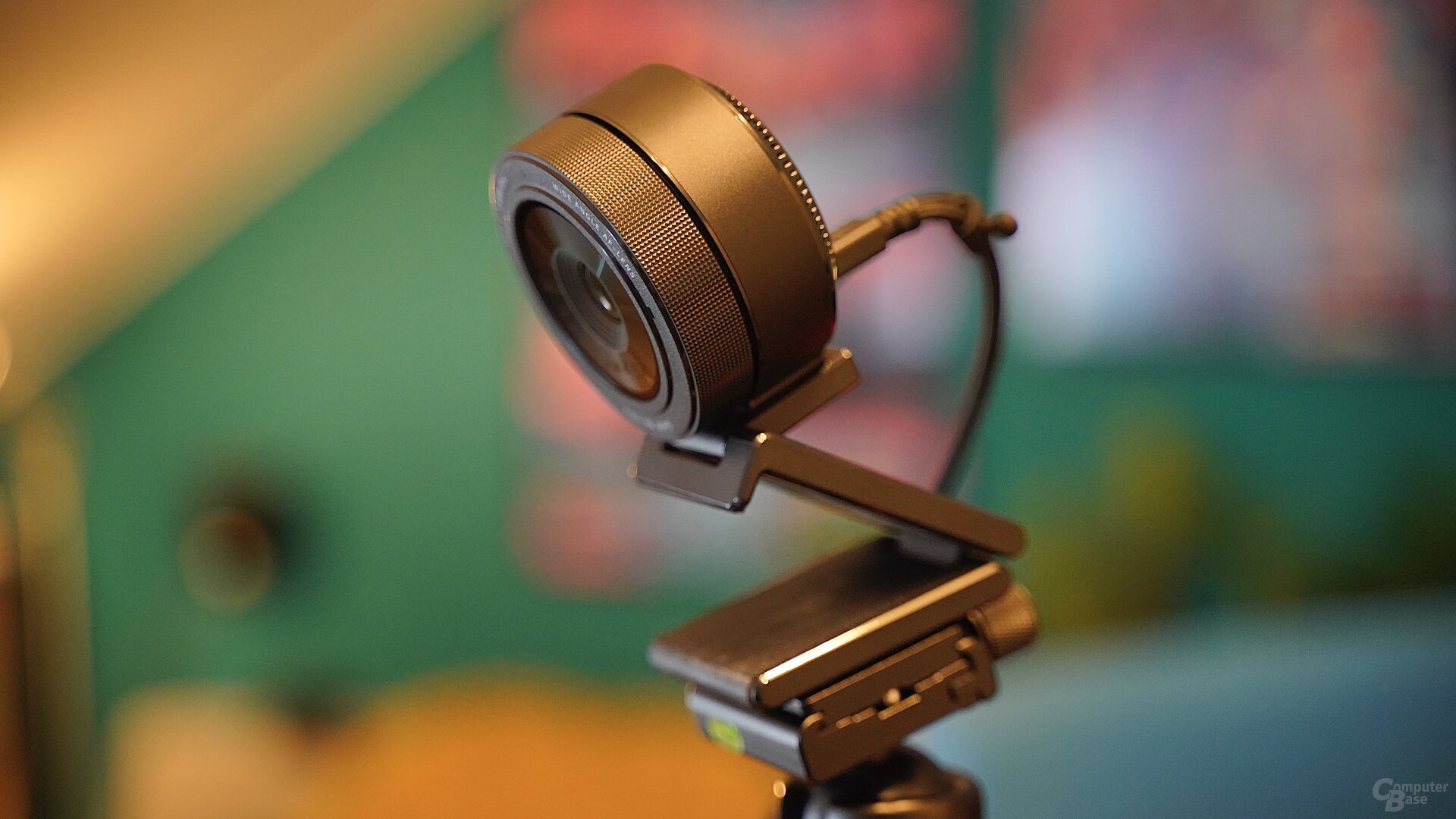 Razer Kiyo Pro
Razer Kiyo Pro facility and alternative software
The question now arises as to what users have to do after purchasing the chosen camera in order to receive an image in the applications of their choice. And ideally the answer is: set up the webcam and plug it in. However, it should be noted that both Facecam and Kiyo Pro require a USB 3.0 slot. Many USB hubs are ruled out for this reason alone, although the Elgato webcam did not always work properly even on USB 3.0 hubs. Even at the USB 3.0 port on the front panel of the PC case there was an occasional error message stating that the facecam should be plugged into a USB 3.0 port, otherwise it would not work.
Cable problems with the Facecam
The background to the problem is, on the one hand, that the facecam transmits recorded video data uncompressed in UYVY format. This is a YUV coding with 4: 2: 2 color undersampling, whereby almost 2 Gbit/s or around 250 MB/s of bandwidth are required. On the other hand, the cause of the error was also the cable supplied with the Facecam, as Elgato confirmed when asked by ComputerBase and provided a replacement cable. With this, in turn, the problems described above were drastically reduced.
When Elgato was asked to what extent Elgato wanted to inform buyers of the Facecam about the faulty cable or offer a replacement, the manufacturer finally replied a few weeks later: The new cable is now included with the Facecam ex works. Users can see it optically on the connection side of the webcam: The old, potentially defective cable has a USB-A connector with a rounded socket, while the new one has a rectangular socket. Corsair does not, however, proactively approach buyers with old cables; In the event of problems, however, the support team will send a replacement cable, the manufacturer will inform you on request.
The cable can also present a problem elsewhere
Razer's webcam is a little more relaxed in this regard and also worked on USB 3.0 hubs. The same – or a USB 3.0 extension cable – are often urgently needed, because a 1.5 m long cable can often not be laid nicely from the top of the screen to behind the PC. The process was much easier with the C270, which can also work with a USB 2.0 connection. When using a smartphone as a webcam, it ultimately depends on the selected app and the existing model whether USB 3.0 is required – but this can usually be assumed. In this case, however, some apps are satisfied with a wireless connection.
Setting up a system camera as a webcam is unsurprisingly the most complicated. On the one hand, it is too heavy to simply be placed on the upper edge of a screen, so that a tripod is absolutely necessary. On the other hand, a suitable lens must also be available and screwed on. Then the question arises whether users strive for the best possible quality and purchase a capture card and install it in the PC, whereupon an HDMI cable usually has to be laid between the camera and the PC. The alternative connection via app – in this case Sony's Imaging Edge – requires a USB 3.0 cable. In any case, the camera itself must be set accordingly in the meantime.
Elgato and Razer offer functional software
But Facecam and Kiyo Pro also offer a lot of configurability, provided that users download the appropriate programs. Both Elgato Camera Hub and Razer Synapse 3 often found it very difficult to correctly recognize the webcams connected to the PC during the test. With Razer's Synapse in particular, it was often like a gamble whether or not the Kiyo Pro was detected by the software after a restart.
However, once the programs have been installed and once they have recognized the webcams, they prove to be very helpful. Both apps allow, for example, the ISO value – i.e. the light sensitivity of the sensor -, the field of view, the contrasts, the saturation, the white balance and a flicker reduction (50 or 60 Hz) to be set. Of course, the field of view is not adjusted using an actual optical zoom, since both cameras have a fixed focal length lens. Instead, the existing image is simply cropped digitally – and always centered – which is stepless in the case of the Facecam and in three predefined steps in the case of the Kiyo Pro.
The latter also offers an adjustment of the focus. The auto focus is activated at the factory, but you can also switch to manual focus as an alternative. This can then be set at will. The facecam lacks such options completely – for an obvious reason: the lens of the Elgato webcam does not have focus lenses at all, instead there is a fixed focus area – but more on that later.
Another option only available on the Kiyo Pro is HDR mode. If it is activated, however, the maximum frame rate drops to 30 FPS. In contrast to the Razer webcam, the facecam allows you to change the measurement mode. Specifically, this means that users can decide for themselves whether the camera should determine their exposure settings based on the entire image or with a higher weighting of the center of the image. Since the face is ideally located there, the facecam should theoretically be able to use this option to properly expose the actual subject if the background is too dark or too light. The Kiyo Pro in turn pursues the same goal by trying to find the face using autofocus and to expose it accordingly.
Both webcams are united internal memory
Meanwhile, the fact that both programs basically only have to be used once to adapt the cameras to the given ambient conditions is particularly pleasing. As soon as all settings are set and saved, both Facecam and Kiyo Pro can access their integrated memory and do not require any active software support. However, it can nonetheless be helpful to keep the software running permanently while streaming, if the lighting conditions change (drastically) during the course of the stream – then manual intervention can often work wonders.
On the next page: Image quality in comparison